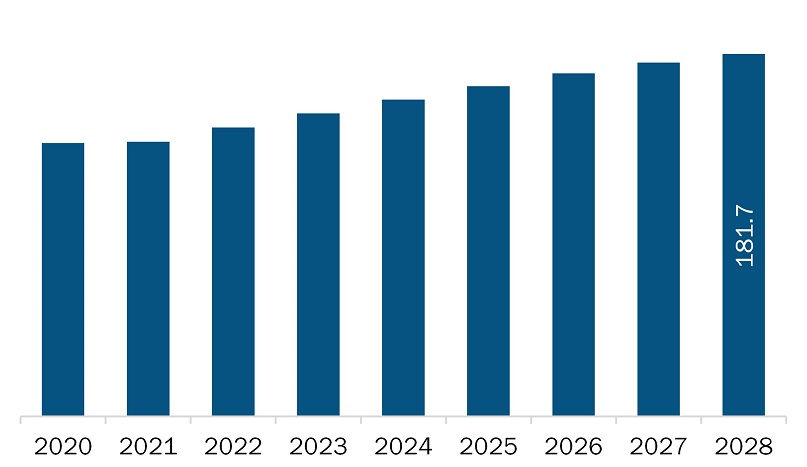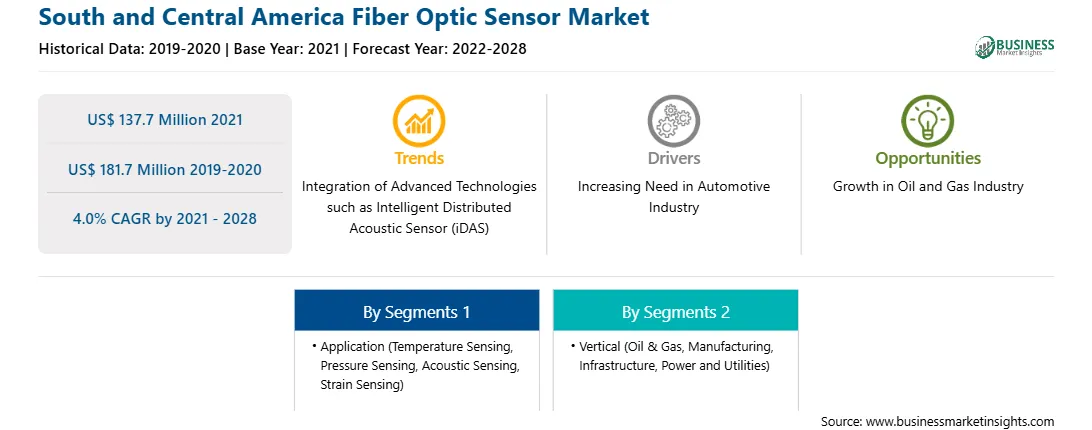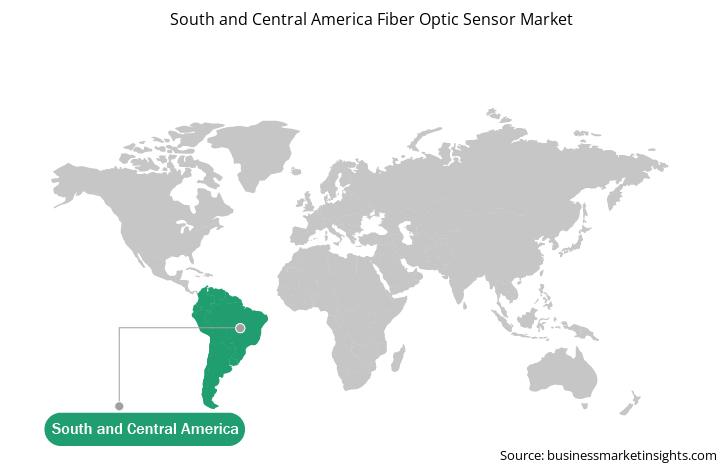This research report on the “Fiber optic sensor Market” provides a holistic view of the market size across major regions. The report further elucidates the key driving factors, restraints, growth opportunities, and future trends pertaining to the market growth.
Moreover, the surging applications in oil & gas sector is expected to bolster the market growth during the forecast period.
South American countries have been witnessing growth in number of industries over the past few years. Industries such as oil & gas, infrastructural, and manufacturing industry equipment have been experiencing fair growth rate; however, the COVID-19 outbreak has created significant turmoil among the manufacturers across industries. Brazil has the highest number of COVID-19 cases, followed by Peru, Chile, Colombia, and Ecuador, among others. The government of South America has taken an array of actions to protect their citizens and contain COVID-19’s spread. Brazil has the largest industrial sector and is also the worst-hit country. This has been highlighting limited resources and investments toward product developments, which has slow-downed the adoption of fiber optic sensors. This factor has negatively impacted the fiber optic sensors market.

Strategic insights for the South and Central America Fiber Optic Sensor provides data-driven analysis of the industry landscape, including current trends, key players, and regional nuances. These insights offer actionable recommendations, enabling readers to differentiate themselves from competitors by identifying untapped segments or developing unique value propositions. Leveraging data analytics, these insights help industry players anticipate the market shifts, whether investors, manufacturers, or other stakeholders. A future-oriented perspective is essential, helping stakeholders anticipate market shifts and position themselves for long-term success in this dynamic region. Ultimately, effective strategic insights empower readers to make informed decisions that drive profitability and achieve their business objectives within the market.

| Report Attribute | Details |
|---|---|
| Market size in 2021 | US$ 137.7 Million |
| Market Size by 2028 | US$ 181.7 Million |
| Global CAGR (2021 - 2028) | 4.0% |
| Historical Data | 2019-2020 |
| Forecast period | 2022-2028 |
| Segments Covered |
By Application
|
| Regions and Countries Covered | South and Central America
|
| Market leaders and key company profiles |
The geographic scope of the South and Central America Fiber Optic Sensor refers to the specific areas in which a business operates and competes. Understanding local distinctions, such as diverse consumer preferences (e.g., demand for specific plug types or battery backup durations), varying economic conditions, and regulatory environments, is crucial for tailoring strategies to specific markets. Businesses can expand their reach by identifying underserved areas or adapting their offerings to meet local demands. A clear market focus allows for more effective resource allocation, targeted marketing campaigns, and better positioning against local competitors, ultimately driving growth in those targeted areas.

The South and Central America fiber optic sensor market is projected to reach US$ 181.7 million by 2028 from US$ 137.7 million in 2021; it is anticipated to grow at a CAGR of 4.0% from 2021 to 2028. The actual time monitoring of underground well conditions is becoming increasingly vital in the oil & gas vertical. To gain a comprehensive picture of underground conditions, operators are using downhole fiber-optic sensors to accurately measure parameters such as temperature and pressure along the length of the wellbore in real time. The useful information about well condition and operation obtained from the sensor data helps the well operators in fine tuning of conditions, thus achieving maximum production. The collection of fiber optic sensor data and analysis of the same reduce uncertainty, enabling better operational decisions that can significantly reduce environmental impact of operations, in addition to increasing well production. Moreover, these sensors are used to real-time leakage detection and predictive maintenance in the oil & gas plants. Such as, AFL provides optimized fiber optic cables for the oil & gas sector. Thus, with the increasing importance of fiber optic sensors in the oil & gas industry, the demand of these sensors is on rise, thus fuelling the market growth.
In terms of vertical, the oil & gas segment accounted for the largest share of the South and Central America fiber optic sensor market in 2020. Further, based on application, the temperature sensing segment held the largest market share in 2020.
A few major primary and secondary sources referred to for preparing this report on the fiber optic sensor market in South and Central America are company websites, annual reports, financial reports, national government documents, and statistical database, among others. Major companies listed in the report are Omnisens SA, Solifos AG, Baumer Holding AG, Keyence Corporation, OMRON Corporation, Luna Innovations Inc., SICK AG, and Yokogawa Electric Corporation.
By Vertical
By Application
By Country
The South and Central America Fiber Optic Sensor Market is valued at US$ 137.7 Million in 2021, it is projected to reach US$ 181.7 Million by 2028.
As per our report South and Central America Fiber Optic Sensor Market, the market size is valued at US$ 137.7 Million in 2021, projecting it to reach US$ 181.7 Million by 2028. This translates to a CAGR of approximately 4.0% during the forecast period.
The South and Central America Fiber Optic Sensor Market report typically cover these key segments-
The historic period, base year, and forecast period can vary slightly depending on the specific market research report. However, for the South and Central America Fiber Optic Sensor Market report:
The South and Central America Fiber Optic Sensor Market is populated by several key players, each contributing to its growth and innovation. Some of the major players include:
The South and Central America Fiber Optic Sensor Market report is valuable for diverse stakeholders, including:
Essentially, anyone involved in or considering involvement in the South and Central America Fiber Optic Sensor Market value chain can benefit from the information contained in a comprehensive market report.